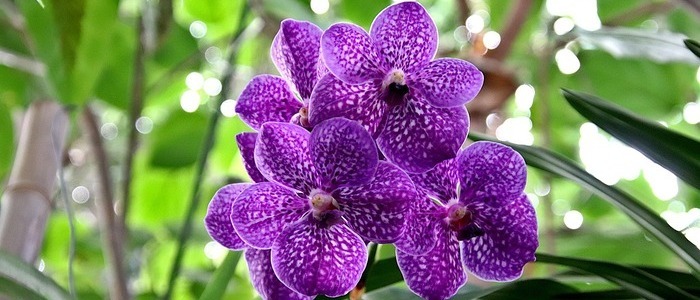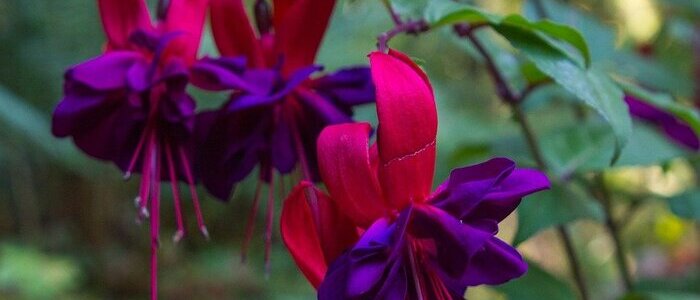When looking for the perfect Gloxinia plants for your home or garden, it’s important to choose one with healthy and vibrant foliage. Look for a plant with lush green leaves that are free of brown spots or wilting. If you have the option, feel the leaves to ensure they are firm and not overly soft or mushy. It’s also important to make sure there is no evidence of pests on the plant such as aphids, spider mites, or mealybugs.
To ensure that your Gloxinia plant thrives for many years, use a potting mix specifically designed for flowering plants. This type of mix will help provide proper drainage while still retaining enough moisture and nutrients for optimal growth.
Gloxinias prefer bright indirect light and should not be placed in direct sunlight as this can cause leaf burn or wilting due to too much heat. To maximize blooms, try positioning your Gloxinia near an east-facing window where it will receive plenty of indirect light throughout the day. These plants require high humidity levels (around 75-80%) so you may need to use a humidifier or mist the leaves regularly if humidity levels are low in your home or garden.
Additionally, avoid exposing your Gloxinia to extreme temperatures as they can be sensitive to temperatures below 10°C (50°F).
By following these tips when selecting and caring for your Gloxinia plant, you can ensure that it will thrive in its environment for many years ahead!

Gloxinias Frequently Asked Questions
How often do gloxinia plants bloom?
Gloxinia plants typically bloom once or twice a year, with each blooming period lasting several weeks. However, the exact frequency of blooming can vary depending on various factors such as the plant's age, growing conditions, and proper care. With proper care and attention, gloxinias can reward gardeners with their beautiful flowers throughout the year.
How is Gloxinia Plants propagated?
Gloxinia plants can be propagated through leaf cuttings, where a healthy leaf is carefully removed from the mother plant and planted in a well-draining potting mix. Another method is through division, where the plant is carefully lifted from the soil and divided into smaller sections, each with their own roots and leaves. Additionally, gloxinias can also be propagated through seeds, though this method requires more time and patience as the seeds need to be sown and nurtured until they develop into mature plants.
Potting and Positioning Gloxinias
Potting and positioning your Gloxinias is an essential step in ensuring its long-term health and success. It’s important to select the right size pot, as a pot that is too large can lead to waterlogging and root rot, while one that is too small will limit the growth of your Gloxinia. An 8-10 inch pot with good drainage should be suitable for most Gloxinias.
It’s also important to choose a quality potting soil specifically designed for flowering plants when planting your Gloxinia. Look for a soil that contains peat moss, perlite, or vermiculite to ensure proper drainage. To prevent over-watering, add some gravel or other coarse material on top of the soil before adding in your plant.
Gloxinias are tropical plants and prefer bright, indirect light but should be kept out of direct sunlight as this can burn their leaves. For optimal results, rotate your plant every few days so it receives even sunlight from all sides. High humidity is also beneficial for Gloxinias; you can increase humidity levels by misting the leaves regularly or placing a humidifier nearby. It’s important to maintain consistent temperatures between 65°F – 75°F (18°C – 24°C). Keeping these conditions in mind will ensure your Gloxinia thrives for many years to come!
Gloxinias Watering and Humidity Requirements
Watering and humidity requirements are key to successfully growing a Gloxinia plant. Gloxinias need consistent moisture in the soil for optimal growth, so it is important to check the soil regularly to make sure it is not too dry. Water your plant when the top inch of soil is dry, but don’t let it become soggy.
Gloxinia plants also prefer humid environments – they do best with moderate temperature and humidity levels. To keep the air around your Gloxinia plant moist, invest in a small humidifier or use a decorative pebble tray filled with water near your plant. The water should reach only halfway up the sides of the pot so that it doesn’t sit in water all day long.
It’s also important to regularly check your Gloxinia for signs of dehydration or water stress. If you notice any wilting leaves or flowers, immediately increase watering frequency and make sure that you are providing enough moisture in the soil. In addition, if you notice brown spots on the leaves, this could be an indication that you are over-watering your Gloxinia plant, so be sure to reduce watering frequency accordingly.
With regular monitoring and appropriate care, you can ensure that your Gloxinia will thrive for many years!
Fertilizing Your Purple Gloxinias
Fertilizing your gloxinia plant is an important part of ensuring the health and longevity of your plant. Gloxinias require a balanced fertilizer to ensure they receive the nutrients they need for healthy growth and blooming. It’s important to choose a fertilizer specifically designed for gloxinias, as it will contain all the necessary macronutrients required for optimal growth.
When selecting a fertilizer, consult the instructions on the package to determine how often it should be applied during the growing season. As a general guideline, you should fertilize your gloxinia every two weeks during its active growing period. When applying fertilizer, make sure to dilute it to half of the recommended strength so that you don’t risk overfeeding your plant with too much nitrogen or other minerals.
It’s also important to water your soil before applying any fertilizer and after each application. This helps ensure that the nutrients are properly absorbed by the soil and transported throughout the root system of your plant. Once winter arrives, stop fertilizing altogether until springtime when you can start again with fresh fertilizer for another season of healthy growth and blooming.
By following these guidelines, readers can ensure their Gloxinia plants get all of the vital nutrients they need to thrive and grow beautiful flowers year after year. With proper nutrition and care, readers can enjoy their gloxinia plants for many years to come!
Common Problems Found in Gloxinas
Taking care of a Gloxinia plant requires knowledge and patience, as a variety of issues can arise. Common problems found in Gloxinia plants include fungal diseases, pests, improper watering, overexposure to sunlight or cold temperatures, and over-fertilizing the soil.
Fungal Diseases: Fungal diseases such as powdery mildew and root rot typically occur when the plant is overwatered or exposed to too much humidity. They are characterized by yellowing leaves, wilting stems, white spots on the leaves and roots that appear dark brown or black. To prevent fungal diseases from occurring it is important to water your Gloxinia only when the top inch of soil is dry and maintain good airflow around the plant. Additionally, it is important to prune any affected leaves and stems immediately.
Pests: Pests such as aphids, mealybugs and thrips can cause significant damage to your Gloxinia plant if left untreated. Aphids are small insects that feed off of sap from leaves and stems while mealybugs suck sap from flowers and buds; they both leave behind a sticky residue called honeydew excreted by them after feeding.
Thrips on the other hand cause damage by eating away at blooms making them look discolored or distorted in shape; they also leave behind silver streaks on foliage when feeding. To prevent pests from infesting your Gloxinia plants recognize signs early on such as yellowing leaves or silvery streaks on foliage; then use insecticidal soap or neem oil spray to get rid of them quickly.
Improper Watering/Exposure: Improper watering or exposure to extreme temperatures can stress out your Gloxinia plants causing their growth rate to slow down significantly. When watering be sure not to overwater your plant as this could lead to root rot which would require repotting with fresh soil mix; instead check for dryness 1 inch below surface before adding more water.
Additionally be sure not keep your gloxinias in direct sunlight for extended periods as this could burn their delicate petals so find a spot near an east facing window with bright indirect light instead. Lastly avoid exposing your plants to cold temperatures below 60 degrees Fahrenheit (15 Celsius) as this will damage their roots leading them unable to absorb enough nutrients needed for healthy growth so move potted plants indoors during winter months if necessary.
Overfertilization: Overfertilization can lead nutrient burn which causes yellowing of older lower leaves due excess salt build up in soil; be sure not apply fertilizer too close its crown (root ball) because it may cause serious damage even kill entire plant if left untreated for long enough time frame so avoid fertilizing within 2 inches radius from crown when possible. Use liquid fertilizer diluted half strength every two weeks during active growing period during spring summer but stop application completely during late fall winter months.
By recognizing common problems found in Gloxina Plants early on readers can take steps ahead of time ensuring their plants remain healthy beautiful for many years come. With proper knowledge care readers can enjoy their gloxina plants healthily bloom happily ever after.
Conclusion
In conclusion, this blog post has provided an in-depth look at the care and maintenance of Gloxinia plants. From choosing the right potting soil to properly positioning the plant for optimal growth, to watering and fertilizing correctly and troubleshooting common issues, readers now have the knowledge to ensure their Gloxinia plant will thrive for many years. With this information, readers can confidently use what they have learned to care for their Gloxinia plants.
For those who want to go further in their learning, there are plenty of resources available online that provide detailed instructions on how to grow and care for a Gloxinia plant. Joining a community of gloxinia enthusiasts is also a great way to stay up-to-date on all the latest gloxinia news and connect with other passionate growers. Additionally, there are plenty of helpful videos available on YouTube that provide step-by-step guidance on how best take care of your Gloxinia plant.
Thank you for taking the time to read this blog post, and we hope you have found it helpful. With some dedication and love, your Gloxinia plant can thrive for many years – you just need to make sure you’re













